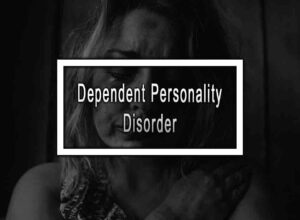What is Schizoaffective Disorder? Mental illnesses are very complex and often misunderstood by many people. People who live with mental illnesses like schizophrenia often suffer from unrealistic perceptions of reality. Another mental health condition that is not as well-known is schizoaffective disorder. Schizoaffective disorder is a chronic mental health condition that is characterized by mood swings and hallucinations. Unlike other types of mental health disorders, many people have not heard about schizoaffective disorder.
Scientists continue to study this disorder to better classify its symptoms and causes. However, schizoaffective disorder remains a misunderstood and stigmatized disorder even though it is a common mental health issue. Understanding schizoaffective disorder is important to help patients who suffer from the condition.
Table of Contents
ToggleWhat is Schizoaffective Disorder?
The definition of schizoaffective disorder is a chronic mental health issue that is characterized by mood swings, hallucinations, and a detachment from reality. An affected person may have symptoms of both psychosis and mood disorders at the same time, but the pattern of the condition can vary from person to person.
People who suffer from schizoaffective disorder may have delusions in which they believe people are watching them or manipulating them. They may hear imaginary voices in their heads, which are often hostile, have random thoughts, and may engage in bizarre behavior. The patients’ moods may shift from excessive elation to depression, leading to suicidal thoughts.
The main signs and symptoms of schizoaffective disorder include
- Psychotic symptoms – hallucinations, delusions (the symptoms of schizophrenia)
- Disordered mood – depression, mania (the symptoms of bipolar disorder)
Symptoms usually start in early adult life but could trouble patients at any age. Depending on the predominant symptom, it could lead to different types of schizoaffective disorder diagnoses.
Types of Schizoaffective Disorder
There are two main types of schizoaffective disorder. These include:
- Bipolar type – A person may have manic episodes with symptoms of elation, distractibility, and disorganization of thought patterns.
- Depressive type – A person may have depressive episodes characterized by apathy, disinterest in activities, and difficulty sleeping.
The differences between the two types of schizoaffective disorder are the mood symptoms present. A bipolar type features mood swings between mania and depression while the depressive type has depressive symptoms without mania components.
Causes of Schizoaffective Disorder
The cause of schizoaffective disorder remains unknown. There is no test available to detect the condition, which means that the diagnosis is based on the patient’s symptoms. Some theories suggest that the condition is due to genetics, while others suggest that it may be a result of environmental influences.
People with an immediate family member who has schizoaffective disorder or schizophrenia are likely to have a higher risk of developing the condition. Researchers have also discovered that changes in brain structure and function may contribute to the development of schizoaffective disorder.
What is schizoaffective disorder? The schizoaffective disorder could start with an initial psychotic episode, which could lead to frequent hospital admissions. People with a history of alcohol and drug abuse are also susceptible to schizoaffective disorder.
Treatments
What is schizoaffective disorder? Schizoaffective disorder is treatable with a combination of medication, psychotherapy, and rehabilitation therapy. The primary goal of the treatment is to manage the patient’s symptoms and improve the quality of their lives.
At the start of treatment, the condition is usually managed with antipsychotics or mood stabilizers that can help to manage mood swings and psychotic symptoms. Psychotherapy treatments could help manage perceived stressors and depression in patients. Rehabilitation treatments could include social skills training, vocational training, and occupational therapy to help patients regain full function in their lives.
Conclusion
What is schizoaffective disorder? Schizoaffective disorder is a chronic mental health condition that is characterized by mood swings, hallucinations, and a detachment from reality. The schizoaffective disorder affects people in different ways, with different patterns of symptoms, including bipolar and depressive types. The causes of schizoaffective disorder are still unknown, but a combination of genetics and environmental factors may contribute to its development.
There is no cure for schizoaffective disorder, but treatment can help to manage the patient’s symptoms and improve their quality of life. Patients with this disorder require medication, psychotherapy, and rehabilitation therapy that can help them lead normal, functional lives. Schizoaffective disorder is a complicated disorder that is not well understood, and that makes it easier for patients to suffer from stigmatization and isolation. It is essential to support people who suffer from this condition to help them cope with their situation and lead fulfilling lives.
Schizoaffective Disorder FAQ
Here are the most common questions about what is schizoaffective disorder.
How is Schizoaffective disorder diagnosed?
Diagnosis typically involves a thorough psychiatric evaluation, including an assessment of symptoms, medical history, and family history. Diagnostic criteria for schizoaffective disorder include a period of at least two weeks of psychotic symptoms in the absence of a major mood episode, as well as mood symptoms that persist for a significant portion of the illness.
Can schizoaffective disorder be cured?
While there is no cure for schizoaffective disorder, with appropriate treatment and support, individuals with the condition can live fulfilling lives. It is important for individuals to work closely with mental health professionals and maintain a treatment plan that works for them.
Is schizoaffective disorder a rare condition?
Schizoaffective disorder is a relatively rare condition, affecting an estimated 0.3% of the general population. It is more common in women than in men and typically develops in early adulthood.
Can schizoaffective disorder be confused with other mental health conditions?
Yes, schizoaffective disorder can be difficult to diagnose because its symptoms can resemble those of other mental health conditions such as schizophrenia, bipolar disorder, major depressive disorder, or borderline personality disorder. Accurate diagnosis requires a thorough psychiatric evaluation and careful consideration of symptoms and medical history.
What can friends and family members do to support someone with schizoaffective disorder?
Friends and family members can provide vital support for individuals with schizoaffective disorder, by providing emotional and practical support, encouraging them to seek treatment, and helping them stay engaged in their treatment plan. It is also important to be patient, understanding, and nonjudgmental, and to educate oneself about the condition and available treatment options.
More like this: 8 Anorexia Nervosa Symptoms












